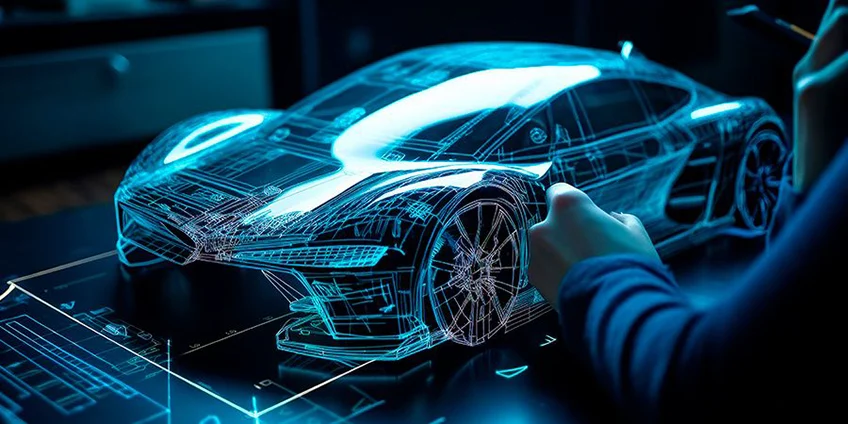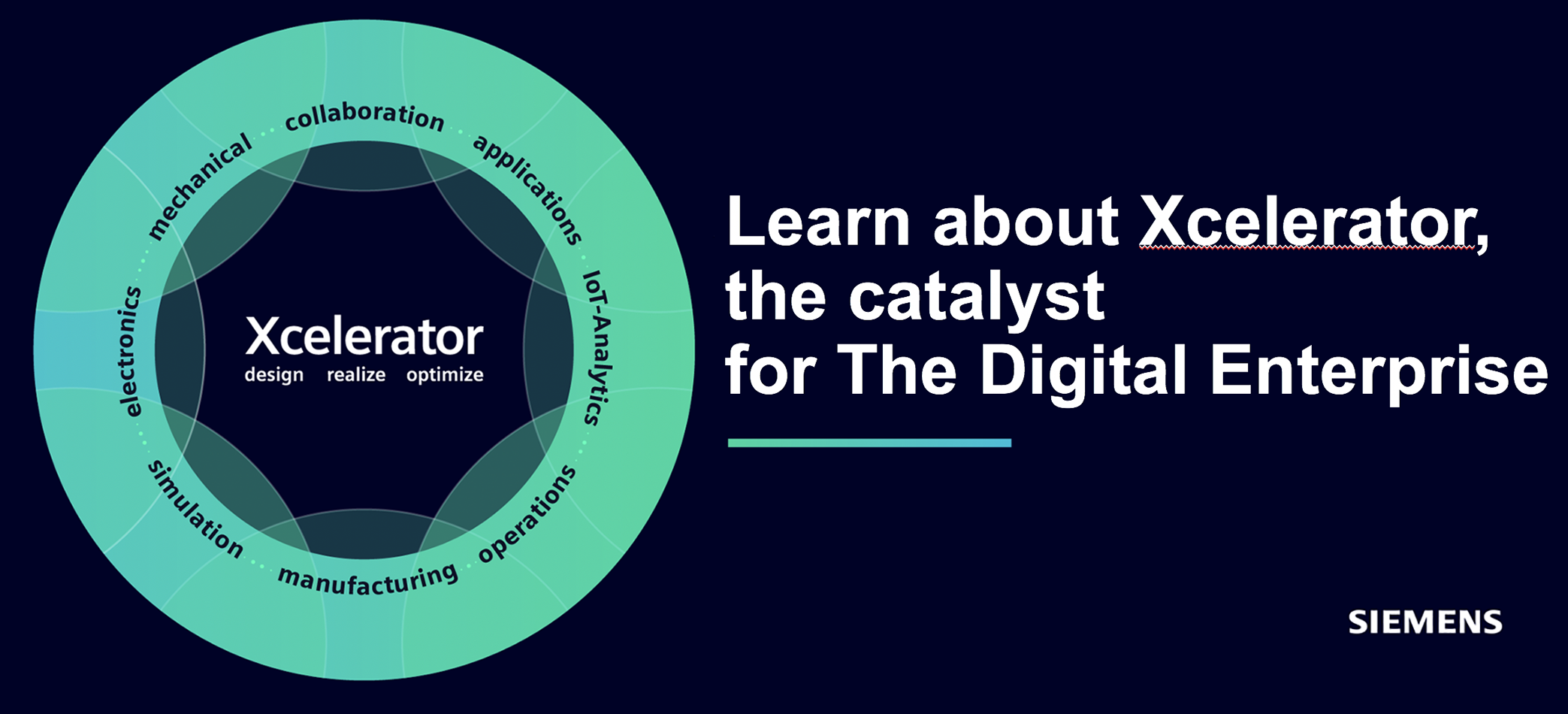So, what is the big problem on the software side of the automotive segment?
”There are, of course, several, but an important part concerns software versus hardware,” says Filip Stål. ”The challenge is far from just developing and producing the software. It is equally important to bring the requirements around hardware and software together into a functioning whole. Just something like the software generally having much shorter life cycles is a concern. These should, and must, still be synchronized with the longer cycles for the mechanical systems. In this context, when it comes to software, car manufacturers have access to, for example, OTA – ”Over-the-Air updates”. But what about the mechanical updates? They can possibly take place in connection with service occasions, but these different opportunities to update are tough to bring together which can give implications: An example – how do you ensure that an update to a braking system ”plays” with the mechanical pieces of the system?”

Necessary to develop a strong infrastructure for software management
But the synchronization problem is just one challenge in a series that has created headaches in not only the automotive industry, but also everywhere where software–certainly also electronics–is growing exponentially as a share of the whole in terms of product development and product realization work.
It all boils down to the fact that in larger organizations you have to create sustainable infrastructures to handle software integration. For example, Mercedes has, according to CSO Magnus Östberg, put enormous resources into building such a structure: to be able to meet the SDV requirements, hundreds of millions of euros are involved, he writes in a LinkedIn article. He further notes that efforts have been made to gather software, hardware, system integration and test functions under one roof.
”In addition, we have already recruited around 3,000 software developers worldwide who work in 19 cross-functional departments,” he added.
Herein lies the challenge, not only for Mercedes, but to an equal extent also for Volkswagen Group, Volvo Cars and others.
”With the demand for AI-based systems, infotainment, autonomous driving functions and wireless updates growing at an exponential rate, it is a huge challenge to establish the capacity to handle increasingly complex software development and integration at a rapid pace,” says Filip Stål, who also claims that PTC with Codebeamer and Windchill RV&S is well positioned in the future race.
”Codebeamer and Windchill RV&S are integrated into modern ALM strategies and have comprehensive solutions for requirements management, quality assurance and risk management,” he adds, also pointing to the new Nordic partner, Nanga Systems’ deep knowledge and experience with these tools. “Ultimately, this will enable us together to deliver great value and support to organizations that strive for excellence in their product development processes. Not least because, via the PLM side, we have very good grounds to stand on when it comes to managing and integrating solutions in this regard.”

The Codebeamer purchase gives ripple effect
Overall, it is therefore a complex whole around the software management that is needed in order to be able to develop systems efficiently and in parallel integrated tracks, live up to regulatory bits, manage tests and manage/coordinate a multitude of software releases. Building an infrastructural architecture means a lot. You don’t have to think very long to figure it out the importance of capable IT and PLM support in this. What has the purchase of Codebeamer a few years ago meant in this context alongside the VW Group’s investment? Filip Stål again:
“The purchase has definitely meant a lot to PTC. It’s kind of a ripple effect. Many of the large orders PTC has received haven’t arrived within like a quarter, people don’t just rush to the shop and buy, so to speak. There has been a bit of each, collaborations with Nanga in some cases, collaborations with those who developed Codebeamer in others. Pilots have been run in various projects and then larger investments have been made in these after conclusions like: ‘this looks good, let’s roll this out on a broad front.’”
Again, this does not happen overnight. It takes time, says Stål. The automotive industry does certainly not stand with a blank sheet of paper, waiting, and thinking about what to do.
“No, far from it, achieving sufficient efficiency in software management is hardly an unexpected problem. Just look at Volvo Cars, which has a lot of delays with its new EX 90 model. They have been open and honest with the media about this and the reason is that they can’t get the software together. It is not tested and ready and and those who are responsible do not dare to move on to launch the vehicle before this feels completely safe and clear, given the tough implications with recalls and other things.”

What can Nanga System add?
What is interesting about the Volkswagen Group’s venture is that Nanga, which PTC has chosen to partner with, has been involved in the Codebeamer venture. But in general, how does Nanga work and what can be added to the PTC community?
First, a few words about Roger Thyrell, who will lead the Nordic operations. He has a broad and interesting CV, which includes central positions at tough competitors such as Siemens Digital Industries Software, where he worked with Siemens’ counterpart to Codebeamer, Polarion, and at PTC’s world-leading VAR partner (Value Added Reseller) PDSVISION he served as Customer Success Manager. Thyrell has also been employed directly at PTC as business development manager and also has experience from software such as IBM Rational DOORS on the track record.
”I would like to start by saying that we, Nanga Systems, work on three legs: Consulting with specialist expertise, of course, but also sales of the software and development of our own tools with additional and complementary capabilities to Codebeamer,” says Thyrell and continues: ”In the latter case, we have, for example, a JIRA integration that is much stronger than the standard integration. Why is this important? When you come in from the ALM side, you are usually not looking to replace JIRA, which is often so deeply rooted in the companies that we integrate with JIRA instead. This is what makes ALM so powerful with Codebeamer; it is a platform that integrates with the rest of the business. A bit of the challenge we’ve seen before in the Nordics is that it’s not normally the same department you talk to when you start discussing ALM in general with software development and the like. Sure, requirements management crosses multiple bridges and the PLM department understands it better, but traditionally this is very siloed at the customers.”
Software innovation as a core of product development
But what is this with SDV about? There are several definitions, but a useful one is that an SDV is a vehicle where core functions are managed by a software layer that sits between the driver’s vehicle interface and that manages its functions via mainly sensors. This enables the manufacturer to improve both usability and functionality dynamically via updates, including wireless, ”Over-The-Air” (OTA) installations. What is now being aimed at in many places in the automotive industry is to create software-defined platforms for vehicles, including software and hardware, which form the basis for differentiating digital vehicle functions.
This development in the automotive industry underscores the increasing importance of software in driving automotive’s industrial transformation. The integration of software with hardware has transformed from basic embedded systems to sophisticated, software-defined products. This transition emphasizes software innovation as the core of product development, enabling continuous feature updates without requiring hardware changes.

The importance of variant management for SDVs
Today’s vehicles are more connected, autonomous and electric than ever. Each of the vehicles currently often contains more than 150 million lines of code, and there will be more. Therefore, solutions are needed that can handle tens of terabytes of data every day. It is, as MB’s Magnus Östberg describes the development: ”A huge commitment and it has led to a seismic change in our way of working.”
PTC believes that with Codebeamer in particular, they have a market leading solution that, integrated with Windchill PLM, will be able to become a solid foundation in this development, not only within VW but in general in the automotive industry.
But one should also not forget that alongside software and electrification support in the product development work, variant management will become a key technology, with strong links to the vehicle companies’ SDV strategies. PTC’s solutions in this make Product Line Engineering (PLE) agile, which comes from the recent purchase of Pure-Systems, which is a configuration engine that contains all the rules necessary to manage all product variants (configurations), especially on the software side. Basically, the software side of SDV contains a multitude of configurations that must work together, and each configuration has different requirements, source code, settings, and test cases. While Codebeamer is used to develop software, Pure-Systems Pure::Variants software handles this configuration complexity. Like Codebeamer, Pure::Variants is, or will be, supporting many automotive companies in their SDV strategies.

An important remark
”The latter is a rather important point,” comments PTC’s Filip Stål. ”Our entire PLM strategy is based partly on integration with our own systems and partly on integration with other systems. But if you take Codebeamer, the absolute plan is that inside Windchill you should be able to see a complete and finished product structure, which contains both software and hardware, requirements and tests, regardless of whether it is on the hardware or software side. All this must be in place with traceability. This integration is ongoing, but we are not going to market today saying that Codebeamer is fully integrated into Windchill yet.”
”Exactly,” says Roger Thyrell. ”Today we use the standardization technology OSLC to tie tools together, which also makes us open up Codebeamer and also Windchill to other tools. Thus, we can have a flora of tools and do not need to lock anyone into this mindset, neither from the digital thread from PTC’s side nor from Nanga’s side. In short, we have an open architecture when it comes to these pieces.”
“An important discussion in this is, what is the purpose of integrating the software into the hardware management? Why do we need to see the software together with a BOM (Bill of Material)? It is precisely because it has become so much more important and that it is the hardware that gives the great feeling of quality,” he added.
”Integration is also important for several reasons. If you just think of a lawnmower, an automover, or car, well, any physical product in similar categories, they contain a lot of software. Software development is much more agile, you release new releases and patches every quarter. But you can’t let this go unless you’ve tested that the hardware plays well with the software, it must be guaranteed to be compatible with a certain hardware configuration,” adds Filip Stål.
Here, no product developer wants to end up in two different silos, where, as the saying goes, ”one hand doesn’t know what the other is doing”. This is, among other things, what PTC and Codebeamer aim to bring to the market, where standards and authority requirements also drive much of the development.
”You also have to be able to comply with the traceability requirements at both levels, hardware and software,” concludes Roger Thyrell.






